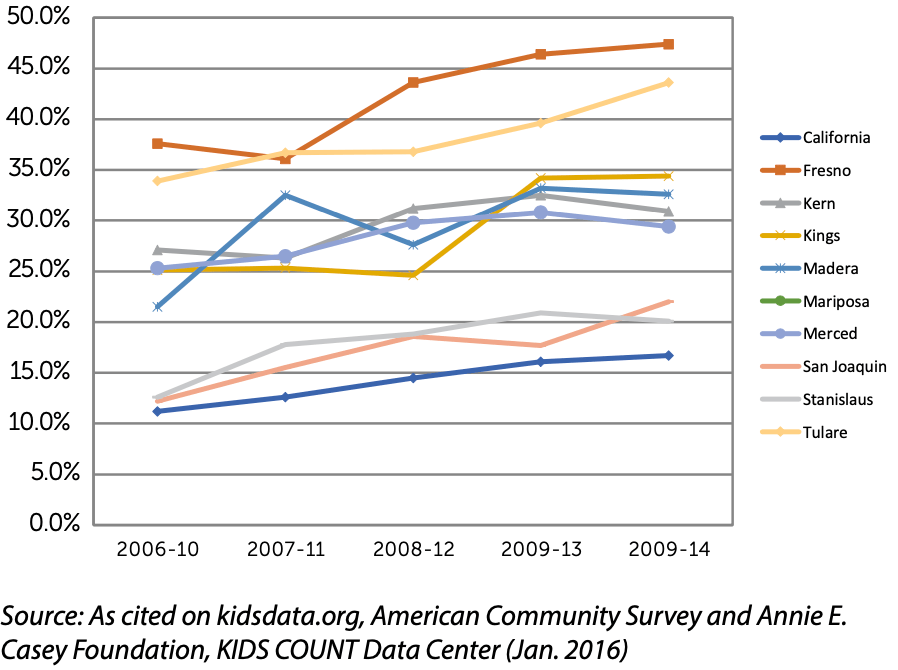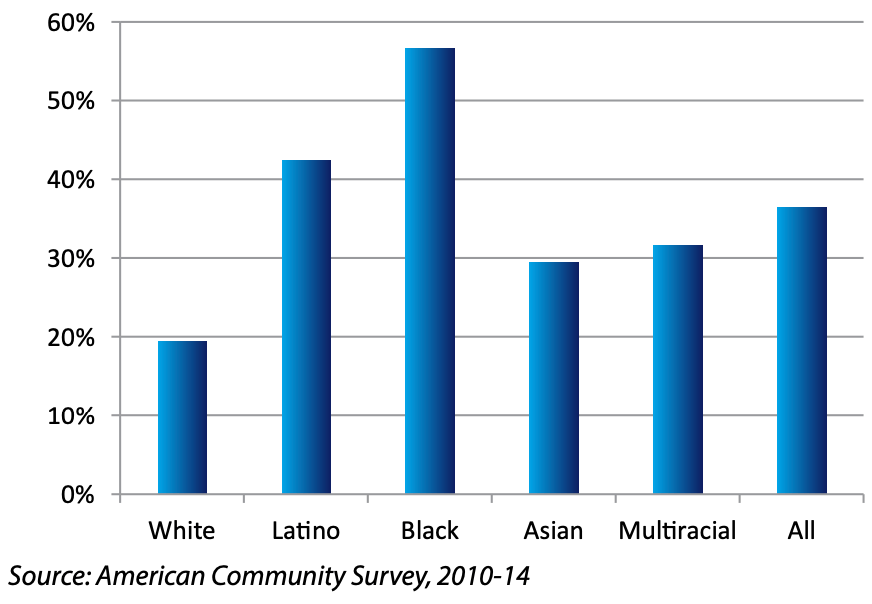Even more, California has a large (Gross Domestic Product) in terms of agriculture production in the country. When you break it down by county, crop value in the valley ranks high. Yet, the valley with the largest crop production also paradoxically has the highest child poverty in the state. Even with economic stability, poverty remains rampant in the central valley. The rates of concentrated poverty, where more than 30% of population are below the Federal Poverty Level (FPL), are greatest in SJV areas and are increasing over time:

Furthermore, poverty rates are highest among children of color. The ethnic gap in poverty is 10 to 35%.

Despite economic potential, health care access and resources also operate at crisis levels. Rural communities with geographic obstacles face shortages in provider availability and health care systems. The same fertile communities of SJV producing the food source of the nation, ironically have the larger limitations of access to food. Food scarcity, where food and especially healthy food is either limited or uncertain, remain above 26 to 29% when compared to food shortage for whole of California at 23%.
